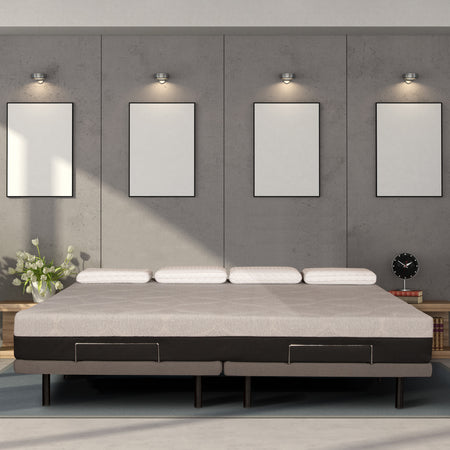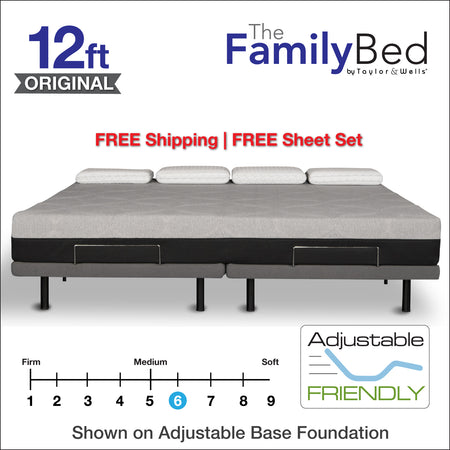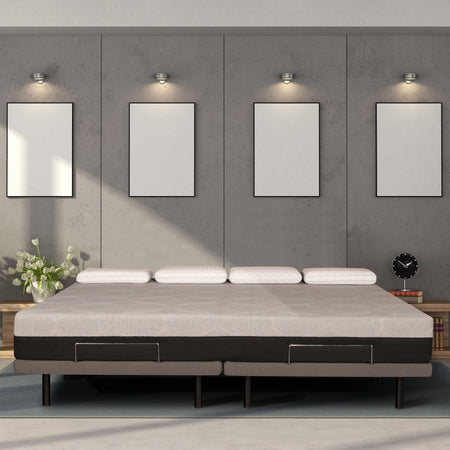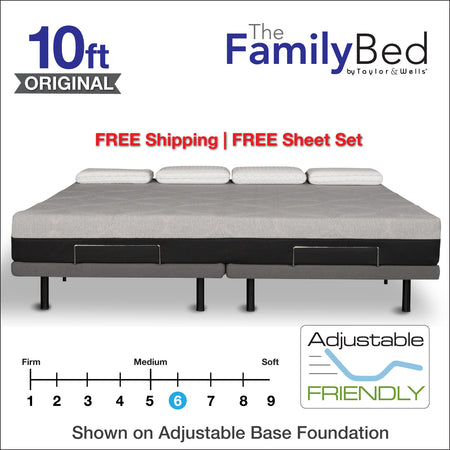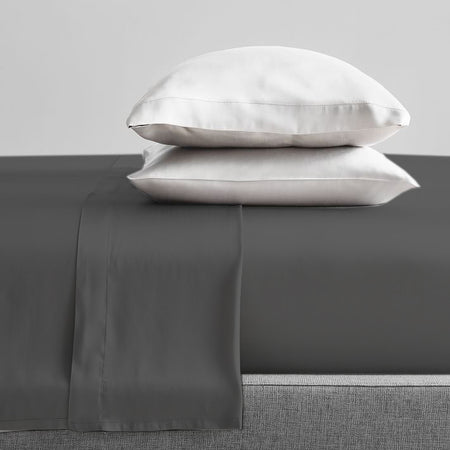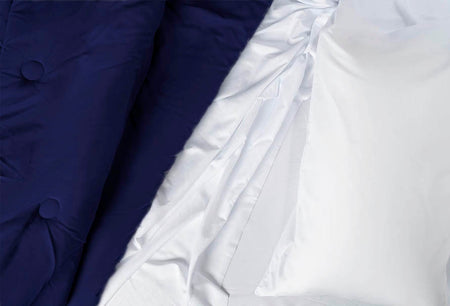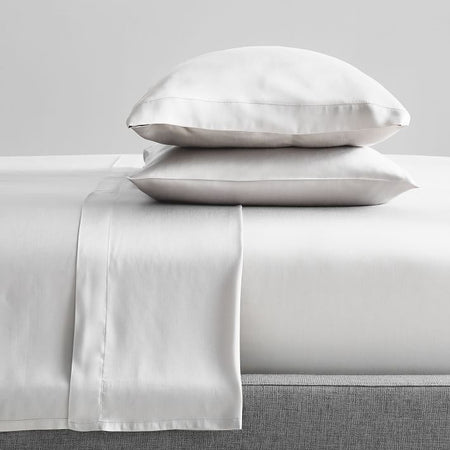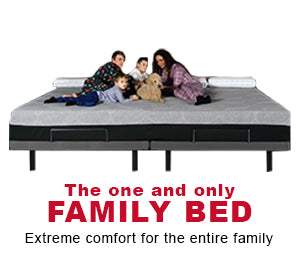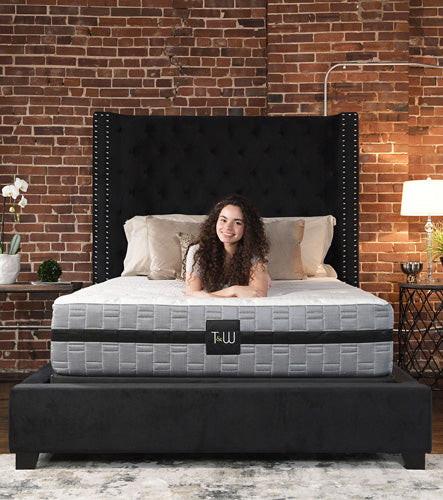The memory foam mattresses we sleep on today began as a space technology project decades ago. Here’s a quick look at how a NASA invention for astronauts turned into a mattress that can improve your sleep every night.
Space-Age Origins
In the 1960s, NASA’s Ames Research Center needed better seat cushions for astronauts and test pilots. Aeronautical engineer Charles Yost helped develop an open-cell, viscoelastic foam in 1966. This foam absorbed impact, relieved pressure, and evenly distributed body weight. It was originally called “slow springback foam” because it slowly returned to its original shape. Later, it became known as temper foam.

The material responded to pressure and body heat, softening when warm and staying firm when cool. These properties made it ideal for safe, comfortable seating. In 1969, Yost founded Dynamic Systems, Inc. to commercialize the foam. Early versions were sensitive to temperature changes, so the formula was improved over time. What started as a NASA project eventually became the foundation for today’s memory foam mattresses.
From Astronauts to Athletes: Memory Foam Finds New Uses
After its NASA debut, temper foam started popping up everywhere. It didn’t stay confined to spacecraft or labs – people found creative ways to use its cushioning magic in daily life. By the 1970s and 80s, this space technology was making its way into sports, medicine, and even the military. Here are a few places memory foam showed up before it ever hit mattresses:
-
Football helmets: NFL teams began lining helmets with temper foam for better head protection. Fun fact: the Dallas Cowboys used it in their helmets in the 1970s. This extra padding helped absorb hits and reduce injuries on the field.
-
Bulletproof vests: The military added memory foam inside bulletproof vests to absorb and spread out the force of impacts. The foam’s density helped reduce the blunt trauma when a bullet hit the vest. Soldiers got an extra layer of defense thanks to NASA’s space age material.
-
Race car safety: High-speed racing organizations like NASCAR and Formula 1 started using shock-absorbing foam in driver seats and headrests. In crashes, these memory foam pads cushion the driver, often helping them walk away from wrecks that would be devastating otherwise. Fire-resistant versions of the foam made race cars safer in fiery crashes too.
-
Motorcycle seats: Long rides can be tough on the body. Bikers in the late 90s discovered that memory foam in motorcycle racing saddles eases the strain. The foam conforms to the rider’s shape, reducing backaches and numbness on long journeys. It turned out that a material made for rocket ships also meant a more comfortable Sunday ride.
-
Astronaut training equipment: Even NASA kept finding new uses. A special 4-inch thick temper foam floor is used in astronaut training obstacle courses to help spacefarers re-adapt to Earth’s gravity after missions. The soft, unstable foam floor makes returning astronauts work to regain balance, helping them get their “Earth legs” back while cushioning their falls.

As you can see, memory foam was everywhere: in sports gear, medical cushioning, automotive safety, you name it. Hospitals used it in wheelchair seats and hospital beds to prevent bedsores for immobile patients, because the foam could provide pressure relief by contouring to the body.
The Journey to Our Bedrooms
The journey took a couple of decades. Early on, memory foam was expensive and tricky to manufacture, so it stayed in high-tech or medical uses. But by the 1980s, NASA had released the foam formula to the public domain. This opened the door for mattress companies to experiment with it.
In 1991, a Swedish company called Fagerdala World Foams took the leap and introduced the first tempur material mattress, known as the Tempur-Pedic Swedish Mattress. It was a hit – people had never felt a bed that literally hugged their body.
Lying on this new mattress felt like floating; the tempur material would soften with your body heat and mold to every curve, giving a custom fit. It’s ability to evenly support weight allowed it to improve sleep and reduce aches. In fact, memory foam beds in hospitals showed they could prevent pressure sores in patients who had to lie still.
Tempur-Pedic and other brands began bringing tempur material and memory foam mattresses to the masses in the 1990s. At first, they were considered luxury products. But over time, manufacturing got easier, and costs came down.
Memory foam started appearing not just in mattresses but also in pillows and mattress toppers. People loved how it contoured to their bodies and eliminated the pressure points that can cause tossing and turning. The phrase “sleeping on a cloud” was often used – finally, a mattress that adjusts to you, rather than you adjusting to the mattress.

Memory Foam Mattress Innovations
The early memory foam beds were revolutionary, but they weren’t perfect. Many first-generation foam mattresses tended to trap body heat. If you’ve ever felt a foam bed that gets a bit too warm overnight, you know the feeling.
Memory foam is temperature-sensitive, which is great for softening and molding to you, but it also meant that traditional designs could run hot. The dense structure that made it so supportive also restricted airflow, causing heat build-up.
To tackle this, mattress engineers came up with new ideas. In the 2000s, open-cell memory foam was introduced as an improvement. Open-cell foam has tiny air pockets, allowing air to flow more freely. This means heat can dissipate instead of getting stuck.
An open-cell structure acts like vents in the foam, making newer foam mattresses more breathable and helping you sleep cooler. The foam still gives you that signature “hug,” but without as much warmth.
Next came gel-infused memory foam – often referred to as just gel memory foam. Around 2006, manufacturers started infusing gel particles or beads into the foam. The idea was to use gel to absorb and distribute heat.
Gel memory foam creates tiny “cooling pockets” that pull heat away from your body and release it slowly, preventing the mattress from overheating. This was a game-changer for folks who loved the feel of memory foam but slept hot.

Companies experimented with infusing other materials into memory foam – like copper, graphite, or charcoal – all with the aim of improving cooling, cleanliness, or even odor control. Mattress makers also started to get creative with mattress covers and toppers. Some high-end memory foam beds have covers made with special cooling fabrics (for example, covers infused with phase-change materials or moisture-wicking fibers) to help keep you from overheating).
Another big step in the evolution was the rise of hybrid mattresses. Not everyone wanted an all-foam bed, so manufacturers started combining memory foam with traditional spring coils or other foams.
A hybrid mattress gives you the signature memory foam pressure relief on top, with the bounce and support of innerspring underneath. This appealed to those who found pure foam too “sinking” or warm. Hybrids have become hugely popular – about one-third of mattresses sold today are either foam or foam-spring hybrids.
From Outer Space to Your Place
The journey has brought us mattresses and mattress protectors that are more comfortable and high-tech than our grandparents could have ever imagined. And the best part is, there’s now a huge variety of memory foam beds out there, so you can find one that’s just right for you.
Today, The Bedding Mart offers various memory foam mattresses designed to suit every sleeper’s needs. If you’re curious to experience this NASA-born comfort for yourself, check out our collection in-store, or online!


